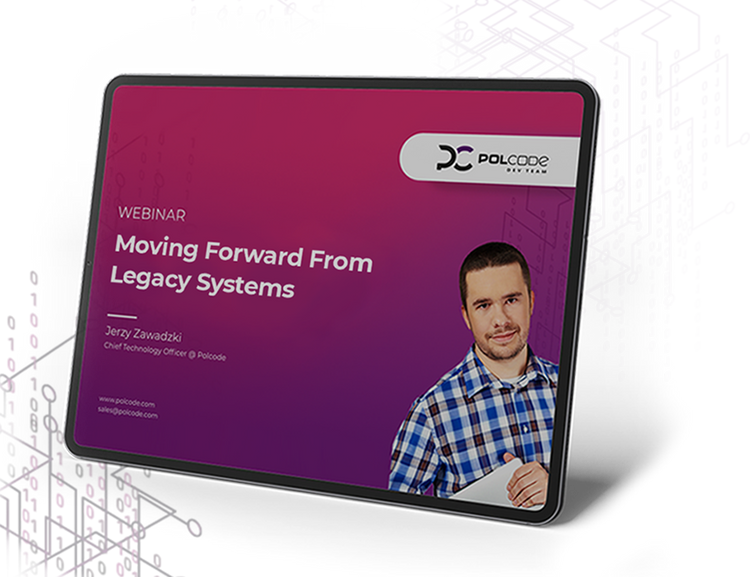

Free, SaaS or enterprise CRM? This is not the right question!
CRM (Customer Relationship Management) software is by no means a novelty, but it still keeps on growing as an industry with a compound annual growth rate projected to be 14.8% through 2017. This growth is driven by SaaS (Software as a Service) CRM systems that are taking an increasingly larger market share (in the region of 50%). Another reason why CRM systems are found to be more and more useful are their growing capabilities. No longer are they only boring sets of tables to manually fill in with information on potential and current customers and to-do lists for your salespersons. Now they can be used to automate actions such as mailing or generating sales reports as well as to analyze the data for actionable insights.
Free, SaaS and enterprise
Aside of a few exceptions you will likely notice in the examples included in the article, CRM systems can be roughly divided into three categories as far as their distribution model is concerned. There are free CRM systems that don’t require users to pay at all, SaaS CRM systems where users usually pay according to monthly plans and traditional in-house CRM systems that require license fees, often associated with large companies. Let’s go through each of these categories and weigh their pros and cons.
Are free CRMs a thing?
And, most importantly, are they a thing worth our attention? Well it’s definitely a “yes” to the first question! There are actually quite a lot of options for companies interested in free CRMs. Bitrix24 and Apptivo are two of the many examples of SaaS CRM systems that can be used free of charge under certain conditions, specifically when the number of employees and storage space don’t exceed certain limits. Otherwise, you have to switch to a paid plan or buy more storage. As some features are also not available in the free version, they fall into the category of freemium products.
Another option is software such as SuiteCRM – an open source and entirely free of charge (aside of paid add-ons and implementation services) program you can download and host in-house and configure to your heart’s content. It incorporates all the features commonly associated with CRM systems, such as: full overview of the sales pipeline with lead management, contract renewals and pricing strategies, advanced customer service management module and the workflow module that automates repetitive tasks.
There are certain reasons why some companies tend to avoid free and freemium CRMs. When a program is free, there has to be another way the company makes money. This may or may not include monetizing the company’s data. Companies that fail to find ways to monetize their software may go out of business, leaving the customer with the problem as to how to retrieve the data and move it to another system. What’s more, the quality of customer support freemium companies provide may vary as the number of users that don’t pay often exceeds their capabilities.
SaaS CRM systems are here to stay
Some experts believe that consistent and informed usage of a CRM system is absolutely essential for a company to keep on growing. That’s because CRM allows you to record the way the marketing and sales departments work and use the recorded data to keep on improving. For example, in a CRM system you have instant access to information about who and when purchased your services. Every day you will know more about your most important leads and the best time to make contact. Back in the day, only large companies had access to these powerful features using costly and difficult to customize enterprise solutions or software they developed themselves. But with SaaS your business gets to use them no matter how many employees you have. SaaS CRMs tend to be one-size-fits-it-all rather than entirely custom-configured, but they still contain just about everything you may need to track your leads all the way from the first contact to closing the sale. At the same time this particular characteristic means that they are much easier to handle, don’t require hosting and their UI is a breeze to learn. In a way, SaaS CRMs democratize the CRM market and their popularity among small- to mid-sized companies is no surprise. Some of the most popular SaaS CRMs include SalesForce, NetSuite, OnContact, SalesNexus, InfusionSoft and the paid version of the aforementioned SuiteCRM – SugarCRM.
In-house CRM to take full control
Oracle, SAP AG, and Microsoft are some of the biggest vendors of CRM systems that allow their buyers to use their own IT infrastructure. Oracle’s Siebel consists of a base application and a string of optional modules. The buyers purchase licenses for each user separately. In-house systems are usually equipped with powerful APIs that make it easy to implement any sort of low-level changes to the system that require developer assistance. Large enterprises and companies with very unique requirements often choose to host their CRM systems data themselves. It’s equally important for companies that consider the security of their data to be a top priority.
SugarCRM and SuiteCRM are other examples of CRM systems to be stored in-house. SugarCRM is a lot more affordable than the systems developed by the big trio. SuiteCRM, on the other hand, is a free and open source alternative to SugarCRM. Both programs are capable and customizable. The former even gives users the ability to perform sales and call center automation. However, they still do require a lot more effort to set up and learn than their SaaS counterparts.
So… which one should I choose?
Based on the information above you have most likely already figured out, which type of distribution model best suits the needs of your business. But the choice should not make you oblivious to a far more important one: what sort of features do I require from my CRM system? When you get familiar with the available options, you should ask yourself:
Considering how helpful CRMs may be for your acquisition and retention efforts, price and its distribution model shouldn’t be the decisive factor in choosing your system. Take your time to decide which system has everything you need, yet doesn’t go over the top so you’re not distracted by bells and whistles you won’t use. Make sure that your CRM system obeys you, not the other way around.
On-demand webinar: Moving Forward From Legacy Systems
We’ll walk you through how to think about an upgrade, refactor, or migration project to your codebase. By the end of this webinar, you’ll have a step-by-step plan to move away from the legacy system.

Latest blog posts
Is Your E-commerce Business Ready for the European Accessibility Act?
Jun 16, 2025 by Janusz Toczko
Legacy Software and Security Risks: Why Regular Audits Are Your Best Defense
Jun 4, 2025 by Jerzy Zawadzki
Magento Enters the SaaS Arena: What Adobe Commerce as a Service Means for Your Business
Apr 24, 2025 by Jerzy Zawadzki
Ready to talk about your project?
Tell us more
Fill out a quick form describing your needs. You can always add details later on and we’ll reply within a day!
Strategic Planning
We go through recommended tools, technologies and frameworks that best fit the challenges you face.
Workshop Kickoff
Once we arrange the formalities, you can meet your Polcode team members and we’ll begin developing your next project.

